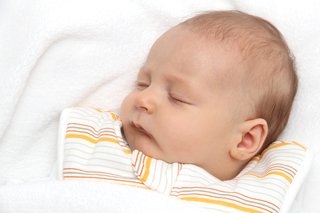Overheating can increase your baby's risk of cot death.
A baby can overheat when they're asleep because of too much bedding or clothes, or because the room is too hot.
Important
Never place your baby to sleep next to a radiator, heater, fire or in direct sunlight
Check how warm your baby is
To check how warm your baby is, look for sweating or feel their tummy. Their tummy should feel warm, but not hot. Other signs of being too warm include flushed or red cheeks.
Use cellular blankets or sleeveless baby sleeping bag
Cotton cellular blankets are best because the tiny holes allow air to circulate.
Do not wrap your baby in too many blankets. You can adjust the temperature by adding one, or taking one away. Do not use duvets, quilts or pillows.
If your baby has a fever (high temperature), use less bedding than normal. Ask your public health nurse (PHN) or GP for advice if necessary.
You can use a sleeveless baby sleeping bag instead of blankets. The sleeping bag should be low tog, with no hood. It should also be the correct size for your baby and conform to current safety standards.

No hats or too many clothes
Babies lose heat through their heads. Your baby could overheat if they wear a hat while sleeping.
Do not let your baby go to sleep wearing a hat, unless advised to do so by your doctor or midwife. Hats are used immediately after birth to keep a baby’s temperature stable. They are not needed for sleep after then.
Do not overdress your baby for sleep. A nappy, vest and babygrow are enough. Use less clothing in warmer weather.
Check the temperature
Make sure the room your baby sleeps in is a comfortable temperature - not too warm or too cold. Room temperature should range from 16 to 20 degrees Celsius. This is 62 to 68 degrees Fahrenheit.
You can use a room thermometer to check the temperature.
